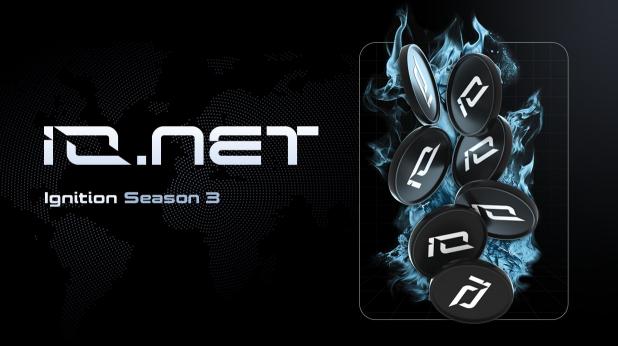
Against the backdrop of Bitcoin (BTC) continuing to hit new highs, the AI sector has returned strongly again after a week of consolidation. From the perspective of the past six months, the tokens of various projects in the AI sector have continued to rise, and tokens such as WLD, RNDR, AGIX, and FET have all increased several times. Especially in the month starting in early February, many new projects have emerged in the AI sector, with tokens increasing by more than five times or even dozens of times in less than two weeks. This article will focus on one of the highly watched projects - io.net.
Introduction to io.net
io.net is a decentralized computing network that supports the development, execution, and expansion of machine learning (ML) applications on the Solana blockchain. It combines 1 million GPUs to form the world's largest GPU cluster and decentralized physical infrastructure network (DePIN). These GPU resources come from underutilized independent data centers, crypto miners, and crypto projects such as Filecoin and Render.
Main functions
The main functions of io.net include:
Decentralized computing network: io.net adopts a decentralized computing model to distribute computing resources around the world, thereby improving computing efficiency and stability.
Low-cost access: Compared with traditional centralized services, io.net provides lower access costs, enabling more machine learning engineers and researchers to obtain computing resources.
Distributed cloud cluster: The platform provides a distributed cloud cluster, where users can choose appropriate computing resources according to their needs and assign tasks to different nodes for processing.
Support for machine learning tasks: io.net focuses on providing computing resources for machine learning engineers, enabling them to more easily perform tasks such as model training and data processing.
Current progress
io.net has made some significant progress:
Decentralized AWS for ML training on GPUs
Instant, permissionless access to a global GPU and CPU network, now live
With 25,000 nodes
Revolutionary technology that clusters GPU clouds together
Can save 90% of computing costs for large-scale AI startups
Integrated with Render and Filecoin
Based on Solana blockchain
Investors
io.net's Series A financing has been completed, raising $30 million and reaching a valuation of $1 billion. Participating institutions include Hack VC, Multicoin Capital, 6th Man Ventures, M13, Delphi Digital, Foresight Ventures, Animoca Brands, Continue Capital, Solana Ventures, Aptos, LongHash Ventures, SevenX Ventures, ArkStream Capital, MH Ventures, OKX Ventures, Amber Group, Modular Capital, etc.
Institutional Strength
Among these institutions are well-known industry leaders, such as Solana founder Anatoly Yakovenko, Aptos founders Mo Shaikh and Avery Ching, Animoca Brands' Yat Siu, Sandbox's Sebastien Borget, and Perlone Capital's Jin Kang.
Project Value
The emergence of io.net fills the gap in the field of decentralized computing, providing users with a novel and promising way of computing. With the continuous development of fields such as artificial intelligence and machine learning, the demand for computing resources is also increasing, so io.net has high market potential and value.
Future Plans
io.net plans to launch a points reward program on March 1 and is expected to launch IO tokens at the end of April. The program, called Ignition, will reward points based on the GPUs provided by users to the network. Although founder Ahmad Shadid declined to comment on whether the points would be converted into io.net's native token IO, he said the token is expected to be launched on April 28.
In general, io.net solves the problem of inefficiency in computing resources by aggregating GPUs from underutilized sources such as independent data centers, crypto miners, and crypto projects such as Filecoin and Render. These resources are combined in a decentralized physical infrastructure network (DePIN), enabling engineers to obtain a large amount of computing power in an accessible, customizable, cost-effective, and easy-to-implement system.
Conclusion: With the continuous development of AI and crypto technology, io.net, as a decentralized computing network, is gradually becoming an important player in the market. It not only provides more cost-effective computing resources, but also provides a solid foundation for future AI applications and research. In the future, io.net is expected to occupy a place in the fields of AI and blockchain.